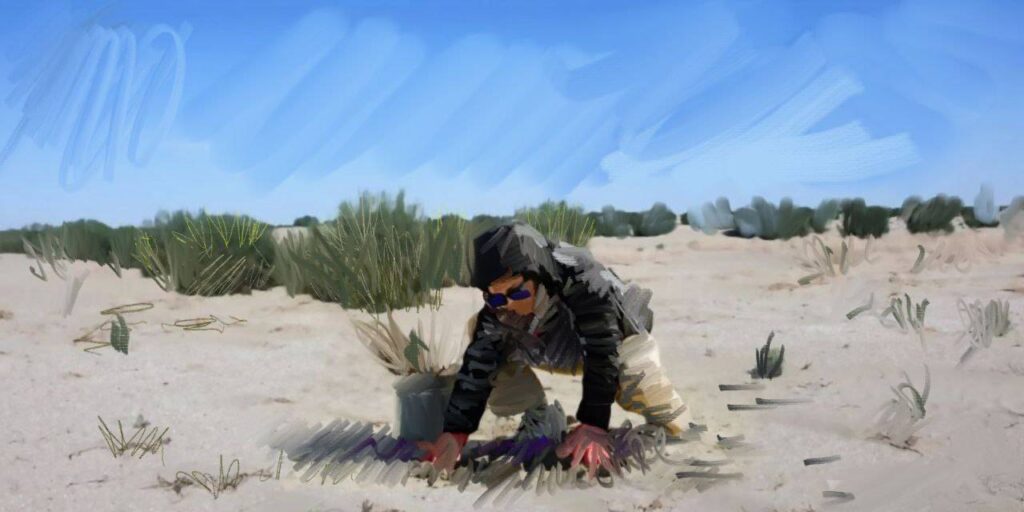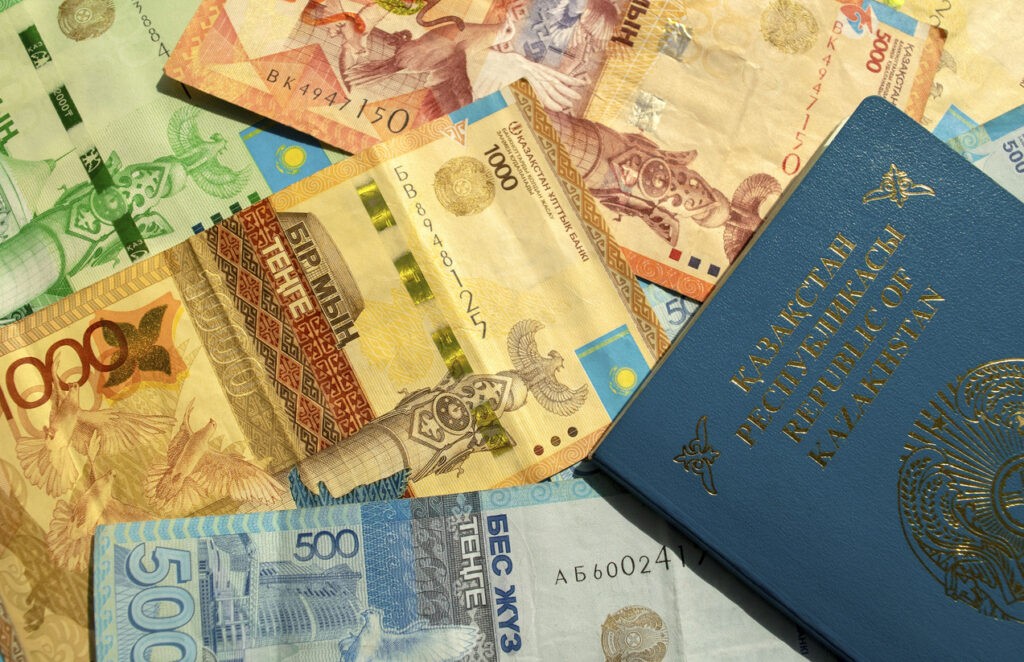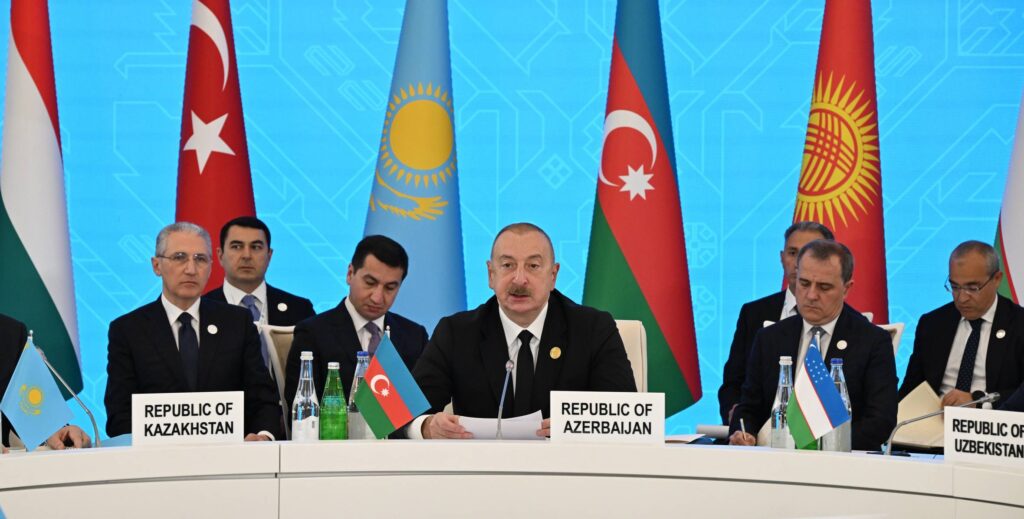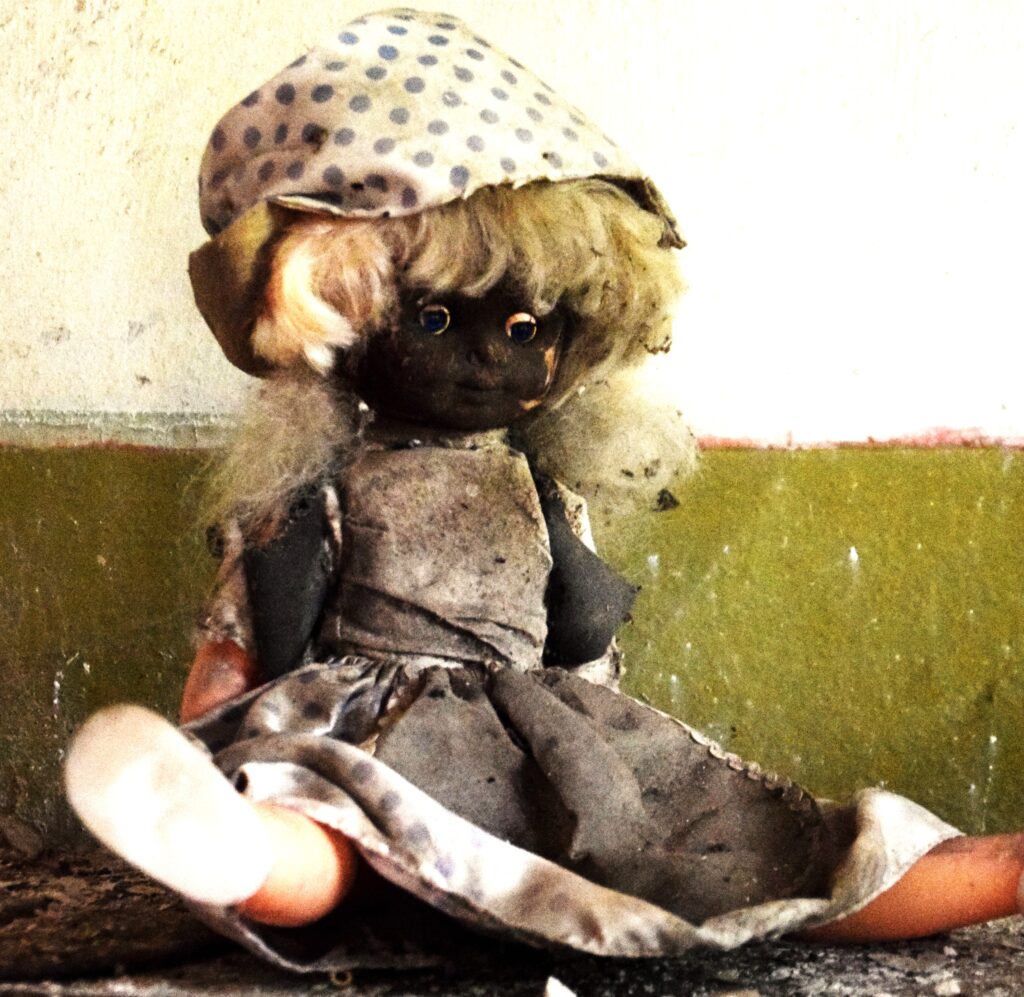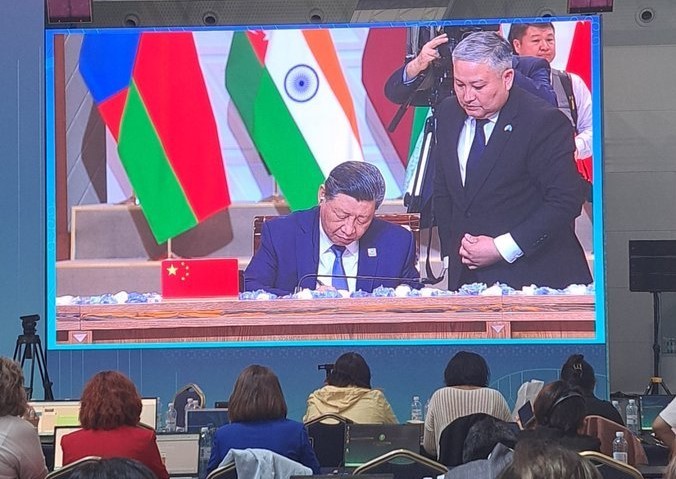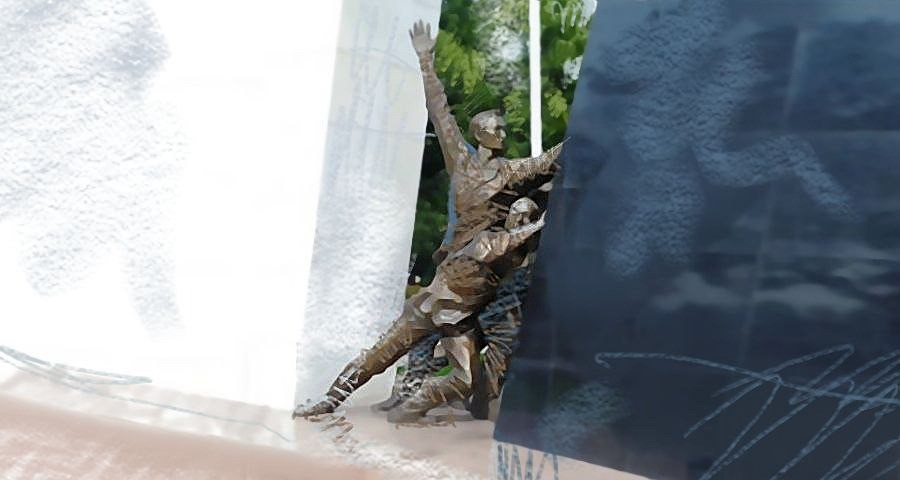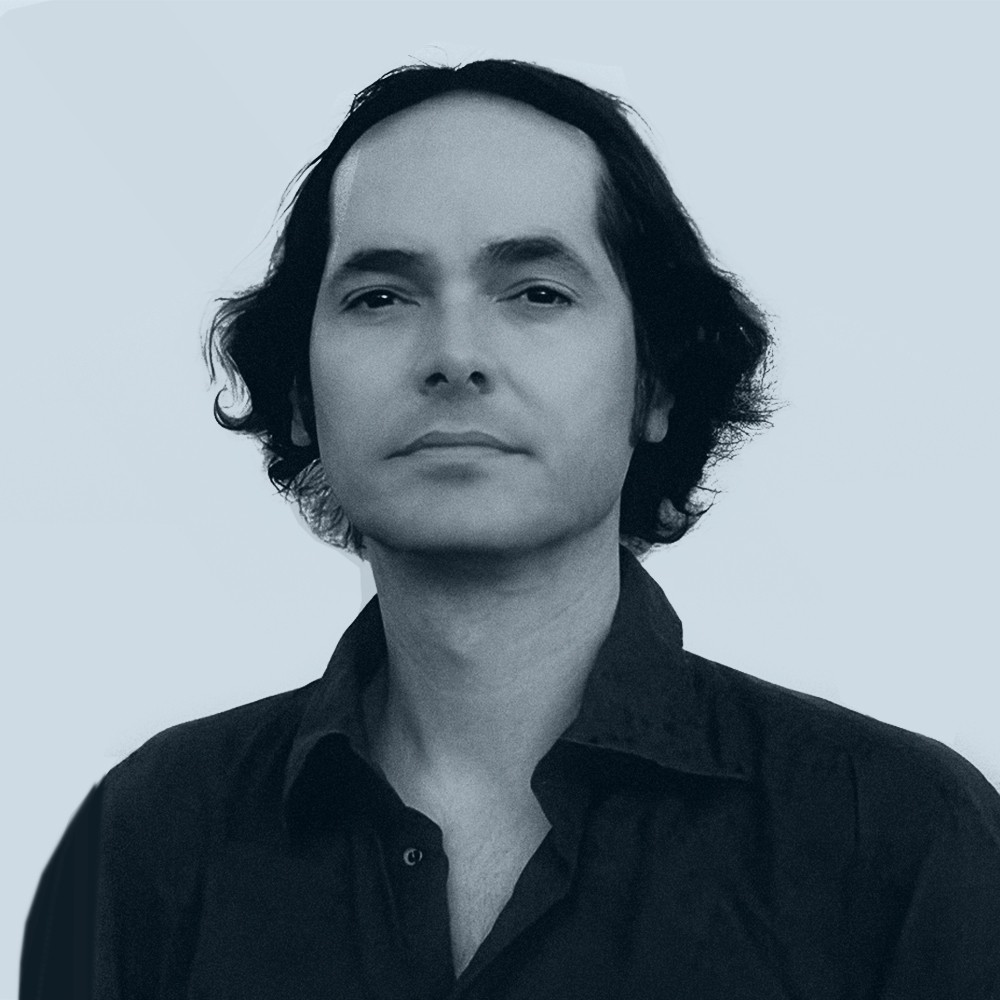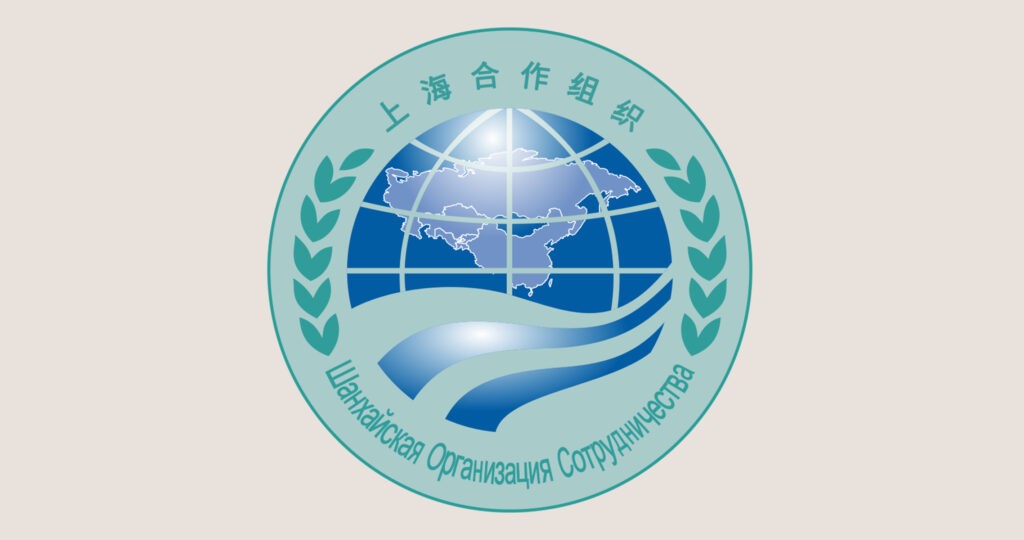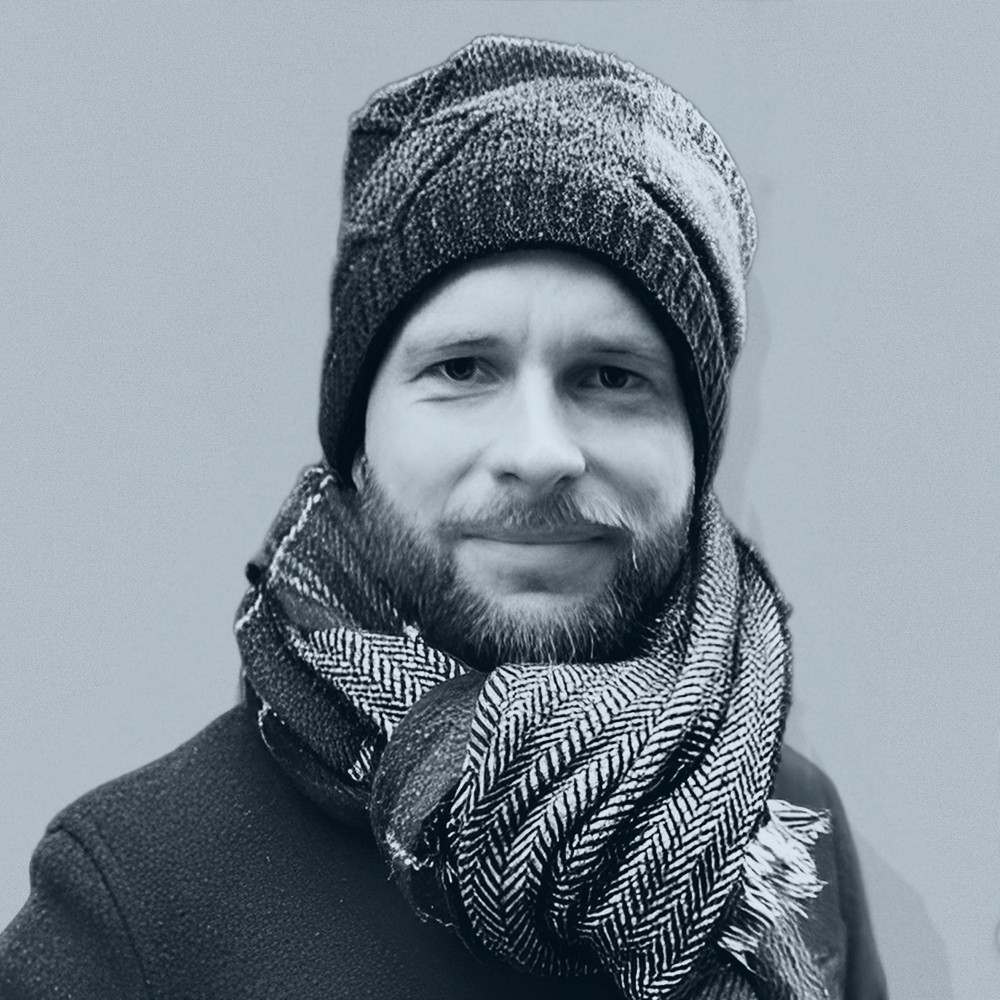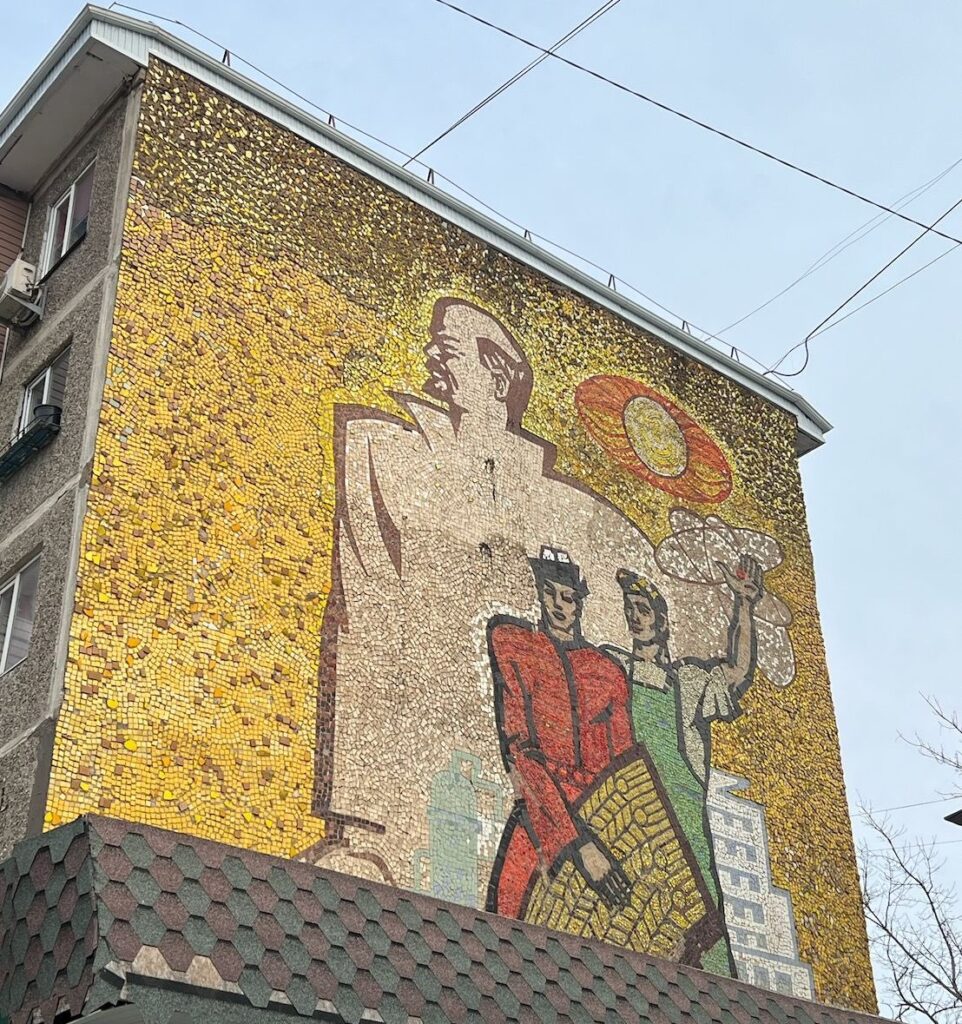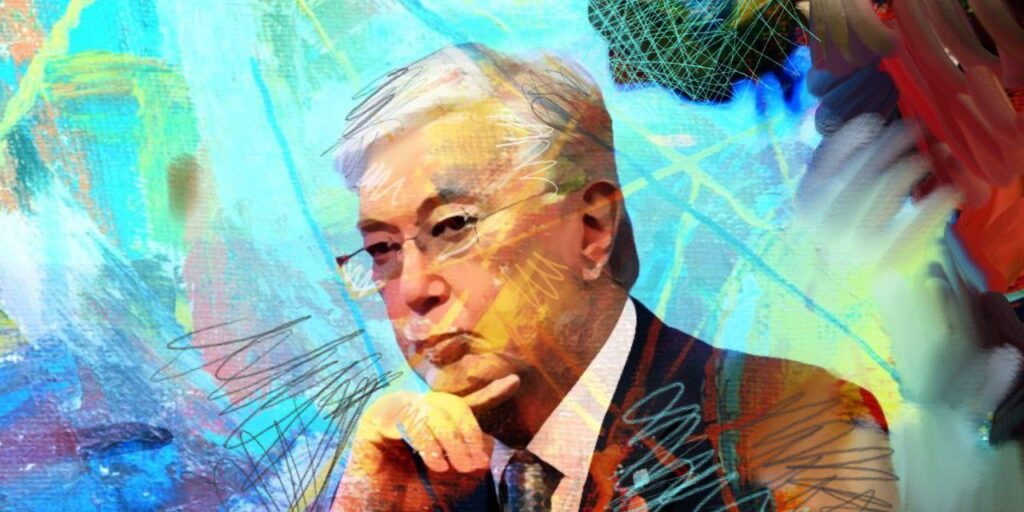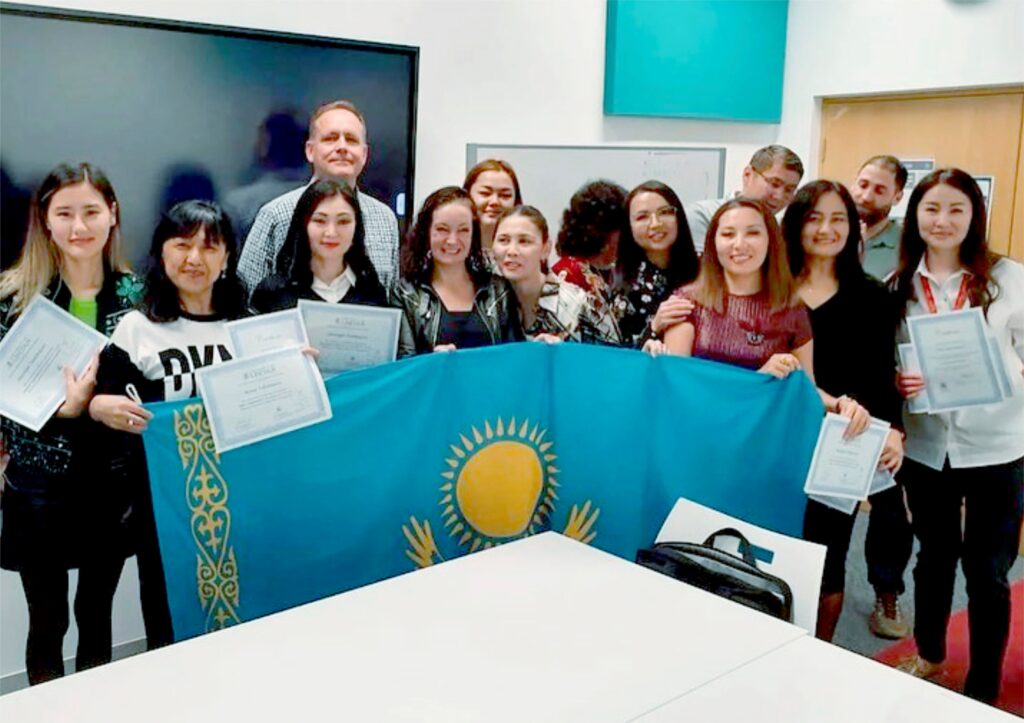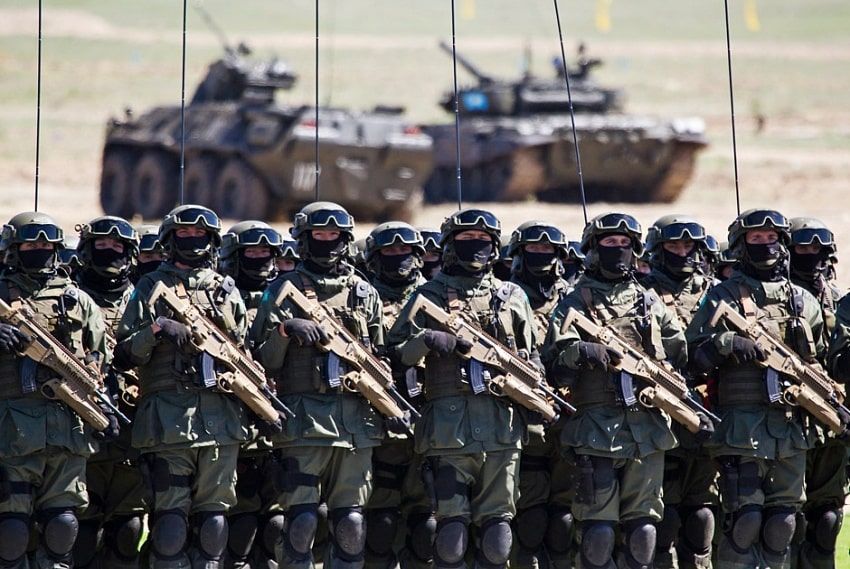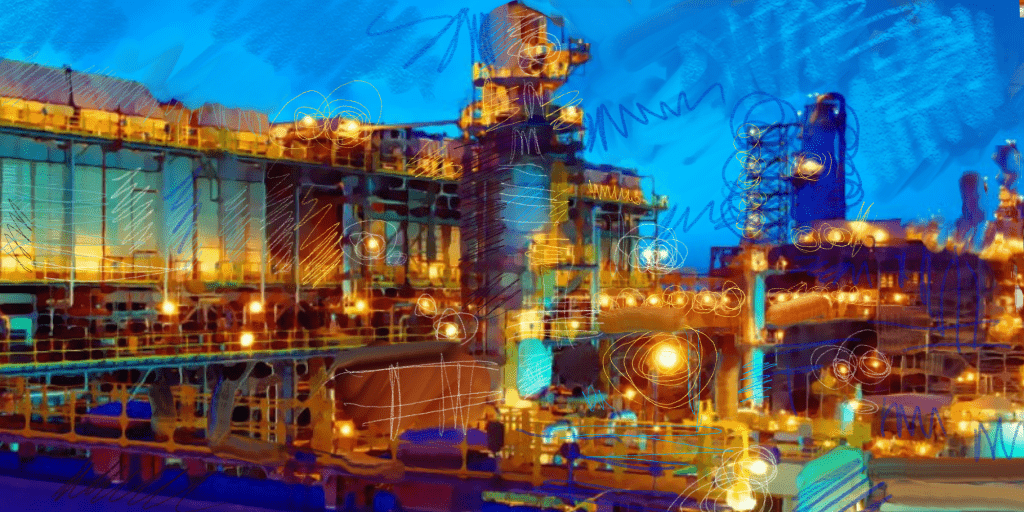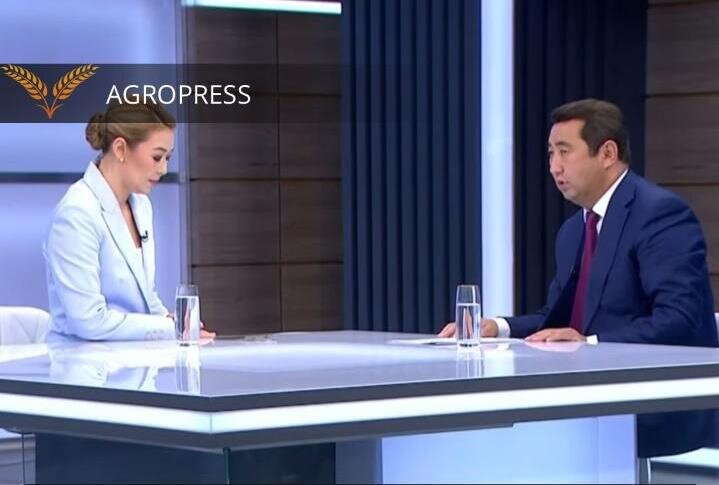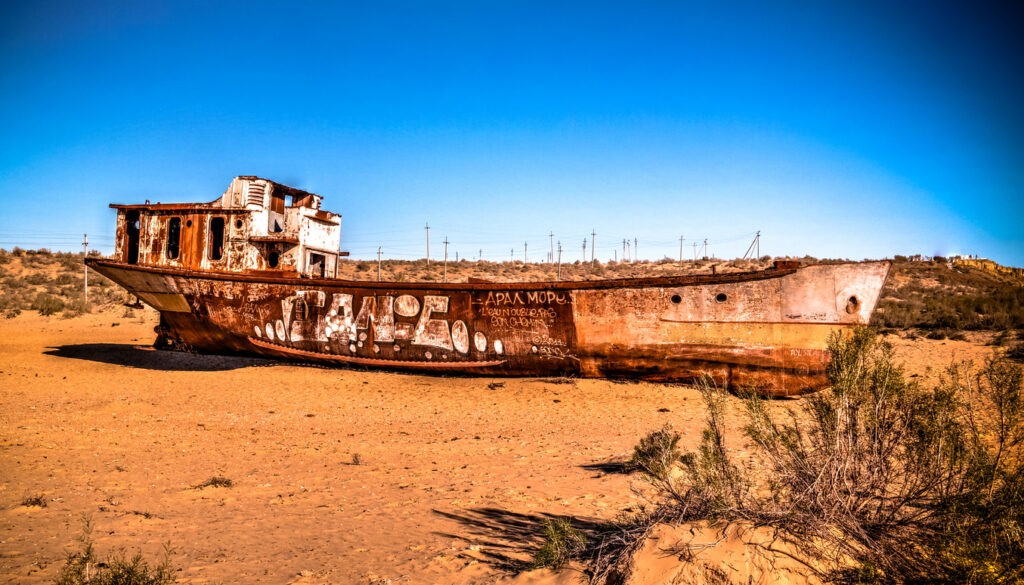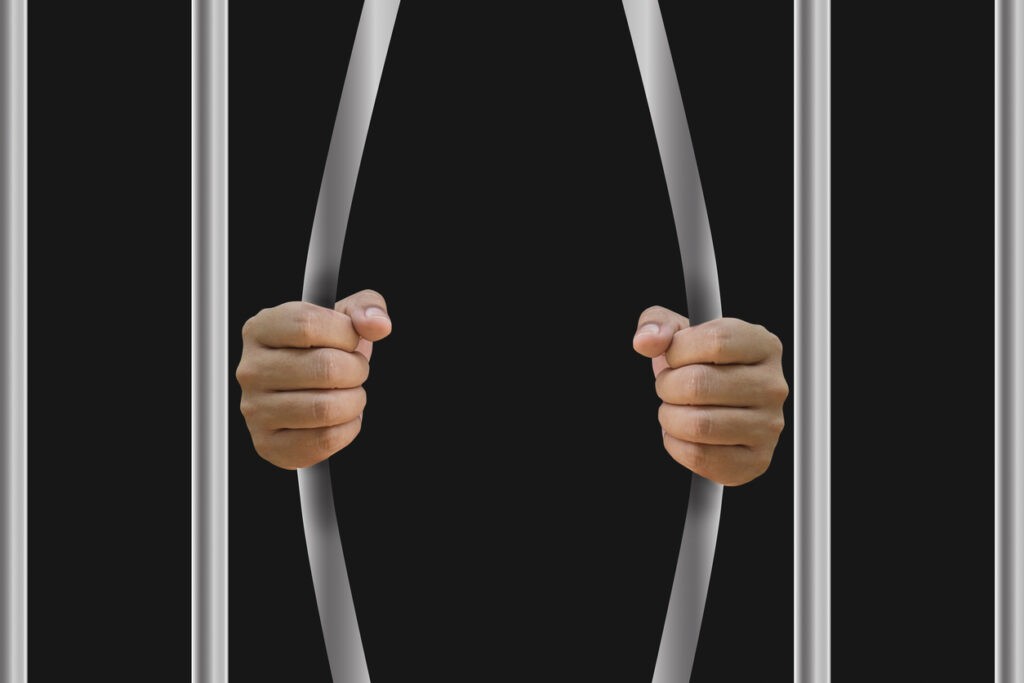China to Help Kazakhstan Plant Artificial Forests on the Aral Sea
On July 23, Kazakhstan’s minister of ecology and natural resources Erlan Nysanbayev met scientists from the Xinjiang Institute of Ecology and Geography, part of the Chinese Academy of Sciences, to discuss the creation of artificial forest plantations on the dried base of the Aral Sea. Following a proposal to establish a joint Kazakh-Chinese center to resolve environmental issues on the Aral Sea, the Chinese scientists will visit the Kyzylorda region to closely examine work being undertaken on the dried sea base. Spanning across Kazakhstan and Uzbekistan, the Aral Sea was once the fourth largest inland body of water in the world, covering 68,000 km². The destruction of the Aral Sea first dates back as far as the U.S. Civil War, when, finding his supply of American cotton under threat, the Russian tsar decided to use the sea’s tributaries to irrigate Central Asia and create his own cotton bowl. With 1.8 million liters of water needed for every bale of cotton, the water soon began to run out. By 2007, the Aral had shrunk to one-tenth its original size. Up until the late-1990s, the land surrounding the Aral Sea was still cotton fields; today, it’s largely an expanse of salinized grey emptiness. The desiccation of the landscape has led to vast toxic dust-storms that ravage around 1.5 million square kilometers. Spreading nitrates and carcinogens, these storms – visible from space – used to occur once every five years, but now strike ten times a year. According to reports, Kazakhstan intends to plant saxaul shrubs on 1.1 million hectares of dried-up sections of the Aral Sea by 2025. Through joint efforts of the Ministry of Ecology and Natural Resources and the region's administration, 544,500 hectares of saxaul have been sown over the past three years, with a further 275,000 hectares to be planted on the former seabed this year. Wind-borne salt and dust cause significant damage to areas adjacent to the Aral Sea and their inhabitants. Every year, over 100 million tons of salt, dust, and sand are blown from the bottom of the former Aral Sea and mixed into the air.
A Eurasian Perspective on the Historic Conviction of U.S. Senator Bob Menendez
On July 16, a federal court in New York found United States Senator Robert "Bob" Menendez (D) guilty on 16 counts in a corruption trial, including charges of accepting bribes to benefit the governments of Egypt and Qatar, obstruction of justice and extortion. He is the first U.S. senator to be convicted as a foreign agent and the charges collectively carry a potential sentence of 222 years in prison. Bribery charges involved receiving gold bars worth over $100,000 and more than $480,000 in cash as well as a Mercedes-Benz for his wife. “This wasn't politics as usual. This was politics for profit,” summarized Damian Williams, an attorney for the Southern District of New York. According to federal prosecutors, among other things, Menendez helped secure millions of dollars of U.S. aid for Egypt and used his office to assist a multi-million-dollar deal with a Qatari fund. Egypt’s intelligence and military officials are said to have bribed him and his wife at a time when U.S. military aid to the country would have paused due to human rights concerns. Menendez also used his official position “to protect and enrich” individuals in exchange for payments, including helping a New Jersey businessman secure a halal certification monopoly with regards to U.S. meat exports to Egypt. Striking similarities to another recent “influence-for-sale” scandal For many Europeans, this U.S. case resembles the European Union’s own Qatargate scandal, which broke out in 2022 and unveiled how foreign governments (Qatar, Morocco and Mauritania) have been channeling hundreds of thousands of euros to a ring of elected European Parliament officials who, in turn, were leveraging their authority to benefit these clients. The services included “attempts to manipulate the Parliament” and “scheming to kill off six parliamentary resolutions condemning Qatar’s human rights record” as Politico reports. In his plea deal, Antonio Panzeri, the chief of the European Parliament's Subcommittee on Human Rights (DROI), admitted to receiving bribes as well as to leading and participating in a criminal organization. This criminal organization reportedly doled out bribes to EU officials through two NGOs named Fight Impunity and No Peace Without Justice, which were allegedly set up to launder money and help fund the scheme. In Menendez’s case, the money ran through his wife’s consultancy. Qatargate allegations extended beyond the Middle East and North Africa. For instance, Atlantico.fr reported that Panzeri and his associates may have been corrupted by at least two Kazakh criminal figures. Europeans appeared lenient on corruption as Panzeri only received a five-year prison sentence, of which four would be suspended and the one year he’d serve would be under house arrest with an electronic bracelet. Momentum behind investigations of key suspects has since waned, leading the EU Observer to call Qatargate “a missed opportunity to bring Europe to justice”. Foreign policy priorities pushed by Senator Menendez need to be re-examined When public officials are found to have used their office to promote external interests, their past policy activities should be closely examined. Bob Menendez has been a member of U.S. Congress since 1993 and chaired the Senate Committee on Foreign Relations from 2013 to 2015, and again from 2021 to 2023. As the chairman, he held significant influence over shaping U.S. foreign policy by overseeing legislation, treaties, and diplomatic issues. The position allowed him to set the agenda for policy discussions, influence strategies, and advocate for specific approaches to international affairs, all of which had an impact on global alliances and challenges. In Menendez’s defense, most of his calls for support and condemnation with regards to foreign governments appear to be evidence based and endorsed by other U.S. law makers. However, given recent revelations in his court case, it is fair for the public to question whether his actions were scoped, scripted, sourced, timed, or targeted in a fashion to serve a particular paying client. Sarah Leah Whitson, Executive Director of the American non-profit organization Democracy for the Arab World Now, believes that Senator Menendez's conviction is an “important step in accountability” but adds that the U.S. government “must do much more to investigate, root out and punish these naked acts of corruption and undue influence by Middle East dictatorships that are rotting our democratic institutions”. Menendez was indeed consistently critical of Middle Eastern regimes associated with authoritarian rule such as Iran and Saudi Arabia. On the other hand, he remained favorable towards Qatar, which is not surprising given that the federal charges against him included receiving bribes from Qatar and activating the office of the U.S. President to arrange a meeting with a member of Qatar’s royal family. Judicial Watch has reported that Qatargate’s “metastasizing corruption scandal” reached the U.S., involving politicians and political operatives, mentioning Menendez as being caught in the “Qatargate crosshairs”. Menendez was also an outspoken champion of Armenia and sided against its adversaries, namely Azerbaijan and Turkey. On September 21, 2023, he led bipartisan legislation banning most assistance to the government of Azerbaijan while authorizing foreign military financing for Armenia. He also led campaigns for the U.S. to recognize the WWI-era massacre of Armenians in present day Turkey as “genocide”. Addressing the Senate floor on November 13, 2023 about the humanitarian crisis in Armenia, he warned against the influence of “malign actors” of Turkey, China, Russia, and Iran. Following news of his conviction, on 18 July, Turkey’s Hurriyet news outlet trumpeted the headline “Anti-Türkiye Senator may receive life sentence: Menendez burned.” His wife since 2020, Nadine Menendez, was born in Lebanon to Armenian parents and has been an advocate for Armenia. Why the Menendez case is relevant for Central Asia Central Asian news outlets have shown limited interest in the U.S. Senator’s conviction and his activities in the region. Many of his criticisms of, and condemnations for, Central Asian states were consistent with those raised by other U.S. government offices. On the other hand, as it has become evident that Menendez commercialized his office, the details behind his political activities including his meetings and correspondence with those representing foreign interests as well as any funds received (campaign finance or other) should be under further scrutiny. We have compiled the below brief chronology of some of his key political actions impacting Central Asian states:
- On July 29, 2019, Menendez co-led a letter to the President of Kazakhstan asking for the release of a prisoner accused of being involved in a multi-billion-dollar bank fraud, which was orchestrated by a notorious fraudster and opposition figure named Mukhtar Ablyazov. Ablyazov faces three concurrent 22-month sentences in the U.K. (2018) and has other judgements against him in the U.K. and U.S. exceeding $5 billion overall (2015, 2022, 2023 and 2024). The senators’ letter also gave credence to claims put forth by a murky Europe-based NGO that has lobbied for at least one other money launderer in addition to Ablyazov, and has links to Russia’s defense industry through the family of its founder and president.
- On May 7, 2020 and June 29, 2020, the presidents of Kazakhstan, Kyrgyzstan, Tajikistan, Turkmenistan and Uzbekistan each received a letter from Menendez and other U.S. senators asking for the “release” of “detainees imprisoned for peaceful activism who are also at high risk of contracting COVID-19”. Each letter named one to three detainees and expressed reasons why they should be released.
- On December 6, 2021, Menendez and five other senators urged the U.S. Secretary of State to “ensure human rights are at the center of the United States’ developing partnership with Uzbekistan during the upcoming Strategic Partnership Dialogue”. The senators wrote that despite much-lauded reforms, Uzbekistan remained among the world’s most repressive countries and was at risk of reversing recent gains.
- On October 7, 2022, Menendez and three other senators pressed U.S. Secretary of State to establish an international investigation mechanism, under the auspices of the United Nations Human Rights Council (UNHRC) or the OSCE, to probe Kazakhstani security forces’ actions during the January 2022 violent protests which left over 200 people dead. Two weeks later, on October 25, 2022, UNHRC issued an opinion based on a single source, focusing on the detention of Karim Massimov, the former head of Kazakhstani intelligence, who was arrested for his alleged role in plotting the violent unrest that transformed into a coup attempt. UNHRC asked to “take urgent action to ensure the immediate unconditional release of Mr. Massimov”. In 2023, Massimov was sentenced to 18 years in Kazakhstan for high treason, attempting a coup and misuse of power. There are reports on his alleged links to grand scale bribery and embezzlement. In the letter, Menendez and other senators also asked for a review of U.S. security assistance to Kazakhstan.
- On November 22, 2022, Menendez and another senator sent a letter to the President of Tajikistan, Emomali Rahmon, expressing “concerns over an escalation of violent harassment of journalists and the government’s failure to protect freedoms of speech and press” and mentioning appreciation for the accreditation for Radio Ozodi journalists, an affiliate of Radio Liberty.
- On August 8, 2023, Menendez sent a letter to Kyrgyzstan’s President Sadyr Japarov asking him to investigate allegations of assisting Russia or its proxies in evading international sanctions imposed in response to Russia’s unlawful invasion of Ukraine. He criticized the country for “democratic backsliding and widespread human rights violations” and urged the president to “lift all restrictions on independent media and journalists, release imprisoned human rights defenders, and repeal measures restricting fundamental freedoms such as the freedom of association.” Japarov denied the accusations.
It Wasn’t Like This Under Nazarbayev: Kazakhstan’s Party Political Landscape
Speaking on June 27 on the eve of Media Workers Day at a reception where awards were presented to distinguished journalists, Kazakh President Kassym-Jomart Tokayev paid special attention to the powers of the head of state. Tokayev emphasized that the term of presidential powers approved in the referendum is a reality that will not be altered through amendments to the Constitution. This means that in 2029, Kazakhstan will see a new president, chosen through a legal expression of its citizens' will.
This new president will not appear out of nowhere; they will likely be nominated by one of the existing political parties, which will enter the electoral battle for the Mäjılıs deputy mandates in 2028. The party leading this significant two-year electoral race will have its nominee occupy the presidency of Kazakhstan.
The topic of the "problem-2029" is already a subject of discussion within the corridors of power. The current president's team has a dual task - ensuring the continuity of democratic and liberal transformations while preventing a resurgence of the Old Kazakhstan. Having been unable to change the country's leadership in 2022, Tokayev's opponents will likely pursue an institutional route. Historically, former president Nursultan Nazarbayev used a similar strategy, having first elected democratically, then extending his powers via a referendum, and gradually amending the Constitution to consolidate his rule without seeking further public approval.
Could a current political party be used as a Trojan horse in such a scenario? Here are the players on the present political landscape.
Amanat
The most influential party in Kazakhstan, Amanat, which formerly supported Elbasy (Father of the Nation) Nursultan Nazarbayev, was founded in 1999 through the merger of several political organizations, with the largest being the Party of People's Unity of Kazakhstan (PNUK). Known as Otan and then Nur Otan (“Radiant Fatherland”) until it was rebranded in 2022, although modern sources attribute this merger to Nazarbayev, he was reportedly not focused on party building at that time.
The Otan party, which resulted from the merger, emerged shortly after the early presidential election of 1999, where Nazarbayev won with a "modest" 80.97% of the vote. The runner-up in the election, Serikbolsyn Abdildin claimed that there had been widespread voter fraud and a failure to tally ballots properly, whilst the U.S. Department of State commented that the undemocratic nature of the election "cast a shadow on bilateral relations".
In 2006, Otan held two congresses, during which three more political organizations joined: the Asar Party, founded by Nazarbayev's eldest daughter Dariga and her then-husband Rakhat Aliyev, as well as the Civic and Agrarian Parties, previously part of the AIST pre-election bloc. Following these mergers, Otan was renamed Nur Otan. After Rakhat Aliyev was charged, initially with the kidnapping and then with the murder of two executives at a bank he controlled in 2007, Dariga and her son took over his stake, swelling her fortune. In 2013, Forbes named her one of the fifty richest Kazakhs with assets of US$595 million, including a vast media empire.
Under Nazarbayev’s rule, Nur Otan was seen as a puppet outfit for the use of the head of state. This theory was disproven, however, by Tokayev, who initiated accelerated democratization after the events of January 2022 events and quit the Nur Otan party, which was subsequently renamed Amanat. Historically, "amanats" referred to the children of high-ranking persons taken hostage for safekeeping, similar to the Turkish practice of the Janissaries.
Despite Tokayev's departure, Amanat did not disintegrate. In fact, it became more active and remains the most influential party in the country. Currently, it holds 62 out of 98 seats in the Parliament of Kazakhstan and has a majority in almost all local representative bodies, the Maslikhats. The party is led by the speaker of the Mäjılıs, Yerlan Koshanov, and holds 62 of the 98 seats in the Mäjılıs.
[caption id="attachment_20260" align="aligncenter" width="288"] Campaign posters, Astana, March 2023; image: TCA, Stephen M. Bland[/caption]
The Democratic Party of Kazakhstan "Ak Zhol"
The Ak Zhol party was registered with the authorities in April 2002. Less than six months earlier, in November 2001, Kazakhstan had experienced its first serious political crisis as a result of a split within the ruling elite. The exact roots of the crisis remain unclear, but it appears to have stemmed from a conflict of interest among a group of reformist bureaucrats, including Galymzhan Zhakiyanov, the former akim of the Pavlodar region, Oraz Zhandosov, the former deputy premier, and Mukhtar Ablyazov. Today, none of the key figures from that revolt hold any significant power or business influence, with Ablyazov, a former banker turned blogger, being the most notable.
Ak Zhol was founded by the politicians Bulat Abilov, Oraz Zhandosov, and Alikhan Baimenov, who split from the core group involved in the Democratic Choice of Kazakhstan movement. The party's name, Ak Zhol, meaning "The Bright Path," is the battle cry of the Kazakh Argyn tribe.
The party later underwent many factional splits. Currently, Ak Zhol is headed by Azat Peruashev, former chairman of the Civic Party of Kazakhstan. Despite supporting Tokayev in the 2022 election, it positions itself as a parliamentary opposition, focusing on defending businesses from arbitrary state actions. Currently, Ak Zhol holds six of the 98 seats in the Mäjılıs.
The People's Party of Kazakhstan
The People's Party of Kazakhstan originally emerged in 2004 as the People's Communist Party of Kazakhstan (PCK) following a split in the Communist Party of Kazakhstan, led by former Supreme Soviet speaker Serikbolsyn Abdildin. As Communism waned, the party dropped the adjective from its name. Ermukhamet Ertisbaev, a former advisor to Nazarbayev and former Minister of Information, now leads the party. Ertisbaev has been at the center of multiple scandals, often involving the expulsion of party members. The PCK supported Tokayev in the 2022 election, and currently holds five of the 98 seats in the Mäjılıs.
The People's Democratic Patriotic Party, "Auyl"
Recently, the Auyl party revised its statutes to focus on the rural electorate, with its congress being convened in the village of Zerenda, Akmola region, to adopt a new, more specialized program focused entirely on the village and its inhabitants. Political scientist Marat Shibutov commented on this development: "The new program marks a crucial shift from generic promises to a targeted approach. The party needs its dedicated electorate to provide stable support, allowing it to send representatives to local authorities and parliament. The congress's rural setting and emphasis on village development, agriculture, tourism, and conservative values signify this strategic pivot. We will see how voters respond to this."
In the 2023 Kazakh legislative election, the Ayul party secured 10.90% of the vote, earning 8 seats. This marked the first time in the party's history that it was able to enter the Mäjilis.
The Nationwide Social Democratic Party
There is a certain overlap between the creation of the Nationwide Social Democratic Party (NSDP) and the current trends voiced by Tokayev. The NSDP was formed in 2006 based on the movement "For a Just Kazakhstan," which had previously nominated former Mäjılıs speaker Zharmakhan Tuyakbay as a presidential candidate.
For a long time, the party positioned itself as an opposition force, occasionally boycotting elections citing a lack of change in the country. Currently, it has four representatives in the Mäjılıs.
The Green Party "Baitak," and Respublica
Two new parties emerged after the bloody events of January 2022. The Greens failed to get into the lower house of parliament, while Respublica - founded by Aidarbek Qojanazarov - has six representatives in the Mäjılıs, making it the third largest faction. Created by entrepreneurs, Respublica rivals Ak Zhol in representing the pro-business sphere.
[caption id="attachment_20262" align="aligncenter" width="366"]
Campaign posters, Astana, March 2023; image: TCA, Stephen M. Bland[/caption]
The Democratic Party of Kazakhstan "Ak Zhol"
The Ak Zhol party was registered with the authorities in April 2002. Less than six months earlier, in November 2001, Kazakhstan had experienced its first serious political crisis as a result of a split within the ruling elite. The exact roots of the crisis remain unclear, but it appears to have stemmed from a conflict of interest among a group of reformist bureaucrats, including Galymzhan Zhakiyanov, the former akim of the Pavlodar region, Oraz Zhandosov, the former deputy premier, and Mukhtar Ablyazov. Today, none of the key figures from that revolt hold any significant power or business influence, with Ablyazov, a former banker turned blogger, being the most notable.
Ak Zhol was founded by the politicians Bulat Abilov, Oraz Zhandosov, and Alikhan Baimenov, who split from the core group involved in the Democratic Choice of Kazakhstan movement. The party's name, Ak Zhol, meaning "The Bright Path," is the battle cry of the Kazakh Argyn tribe.
The party later underwent many factional splits. Currently, Ak Zhol is headed by Azat Peruashev, former chairman of the Civic Party of Kazakhstan. Despite supporting Tokayev in the 2022 election, it positions itself as a parliamentary opposition, focusing on defending businesses from arbitrary state actions. Currently, Ak Zhol holds six of the 98 seats in the Mäjılıs.
The People's Party of Kazakhstan
The People's Party of Kazakhstan originally emerged in 2004 as the People's Communist Party of Kazakhstan (PCK) following a split in the Communist Party of Kazakhstan, led by former Supreme Soviet speaker Serikbolsyn Abdildin. As Communism waned, the party dropped the adjective from its name. Ermukhamet Ertisbaev, a former advisor to Nazarbayev and former Minister of Information, now leads the party. Ertisbaev has been at the center of multiple scandals, often involving the expulsion of party members. The PCK supported Tokayev in the 2022 election, and currently holds five of the 98 seats in the Mäjılıs.
The People's Democratic Patriotic Party, "Auyl"
Recently, the Auyl party revised its statutes to focus on the rural electorate, with its congress being convened in the village of Zerenda, Akmola region, to adopt a new, more specialized program focused entirely on the village and its inhabitants. Political scientist Marat Shibutov commented on this development: "The new program marks a crucial shift from generic promises to a targeted approach. The party needs its dedicated electorate to provide stable support, allowing it to send representatives to local authorities and parliament. The congress's rural setting and emphasis on village development, agriculture, tourism, and conservative values signify this strategic pivot. We will see how voters respond to this."
In the 2023 Kazakh legislative election, the Ayul party secured 10.90% of the vote, earning 8 seats. This marked the first time in the party's history that it was able to enter the Mäjilis.
The Nationwide Social Democratic Party
There is a certain overlap between the creation of the Nationwide Social Democratic Party (NSDP) and the current trends voiced by Tokayev. The NSDP was formed in 2006 based on the movement "For a Just Kazakhstan," which had previously nominated former Mäjılıs speaker Zharmakhan Tuyakbay as a presidential candidate.
For a long time, the party positioned itself as an opposition force, occasionally boycotting elections citing a lack of change in the country. Currently, it has four representatives in the Mäjılıs.
The Green Party "Baitak," and Respublica
Two new parties emerged after the bloody events of January 2022. The Greens failed to get into the lower house of parliament, while Respublica - founded by Aidarbek Qojanazarov - has six representatives in the Mäjılıs, making it the third largest faction. Created by entrepreneurs, Respublica rivals Ak Zhol in representing the pro-business sphere.
[caption id="attachment_20262" align="aligncenter" width="366"] Azamathan Ämirtai, founder and Chairman of Baytaq (Green Party); image: TCA, Stephen M. Bland[/caption]
In the shadows
Given the right circumstances, any of the above parties, including Amanat and Ak Zhol, could potentially be co-opted as vehicles for representatives of Old Kazakhstan to return to power. So far, there have been no indications of this happening. However, the same cannot be said for certain public figures or organizations that have not yet entered parliament.
Take, for instance, Sanzhar Bokayev, a Nazarbayev-era official whose attempt to register his party Namys ("honor") in 2022 raised serious suspicions. Bokayev held the presentation of his organization—labeled a statutory congress despite not having the required number of delegates—at the Novotel hotel owned by Aliya Nazarbayeva. Simultaneously, Bokayev gained notoriety as a proponent of reducing or eradicating recycling fees, a sector which primarily benefits Aliya Nazarbayeva and her LLP, Operator ROP. According to OCCRP, the LLP received a billion dollars of government funding in three years, which illustrates how Old Kazakhstan can employ sophisticated tactics to disguise its long fingers.
Azamathan Ämirtai, founder and Chairman of Baytaq (Green Party); image: TCA, Stephen M. Bland[/caption]
In the shadows
Given the right circumstances, any of the above parties, including Amanat and Ak Zhol, could potentially be co-opted as vehicles for representatives of Old Kazakhstan to return to power. So far, there have been no indications of this happening. However, the same cannot be said for certain public figures or organizations that have not yet entered parliament.
Take, for instance, Sanzhar Bokayev, a Nazarbayev-era official whose attempt to register his party Namys ("honor") in 2022 raised serious suspicions. Bokayev held the presentation of his organization—labeled a statutory congress despite not having the required number of delegates—at the Novotel hotel owned by Aliya Nazarbayeva. Simultaneously, Bokayev gained notoriety as a proponent of reducing or eradicating recycling fees, a sector which primarily benefits Aliya Nazarbayeva and her LLP, Operator ROP. According to OCCRP, the LLP received a billion dollars of government funding in three years, which illustrates how Old Kazakhstan can employ sophisticated tactics to disguise its long fingers.
Will Kazakhstan Manage to Save the National Fund?
Experts report that Kazakhstan's National Fund has seen cumulative withdrawals of $100 billion over the past decade. The sovereign wealth fund, managed by the National Bank of the Republic of Kazakhstan, has often been used to meet state needs. Despite this, with the National Fund for Children program set to launch in 2024, President Tokayev has instructed an increase in its assets. The National Fund was established in 2000 by a decree from former President Nursultan Nazarbayev. It consolidates state assets held in the national bank account of the Republic of Kazakhstan. The fund's income is derived from two sources: tax receipts from the oil and gas sector and earnings from managing its assets. Starting in 2024, the National Fund for Children program will receive 50% of the fund's annual income. Business analyst Abzal Narymbetov explained that the fund's initial influx came from the sale of a 5% stake in the Tengiz oil field for $660 million in 2001. At its inception, the fund was intended to benefit future generations. However, various crises and management errors have frequently forced the government to dip into what is often called the "people's piggy bank." Likening the National Fund to a similar structure in Norway, Narymbetov states that the fund's accumulation peaked at more than $70 billion in 2014. "Since then, the NF has diverted money to 'urgent current needs,' such as bailing out commercial banks, supporting national companies, and filling holes in the state budget. At the moment, less than $60 billion remains in the fund. Kazakhstan began accumulating oil money with the production of 0.8 million barrels in 2001. Norwegian and Kazakh oil production has been in the same range of 1.8-2.0 million barrels for the last eight years. In other words, Kazakhstan and Norway have been producing in the same range for the last eight years; however, we spend significantly more. "For example, the Norwegian Petroleum Fund (renamed the state pension fund) was established by the government in 1990. Money was first invested in 1996, but the first figures that can be traced are $23 billion in 1998. The oil money, in my opinion, has been wisely invested in different assets. As a result, it has reached a record level of $1.4 trillion today," said Narymbetov. The analyst pointed to research by economists indicating that if money from the National Fund of Kazakhstan had not been used for current spending needs, it would now exceed $150 billion. He also cited a study suggesting that if oil prices drop to $30 per barrel, the fund's reserves could be depleted within five years. Twenty years ago, Kazakhstan had high expectations for the National Fund, hoping it would act as a financial savior during crises and provide support for young citizens. In 2022, President Tokayev announced plans to increase the National Fund's assets to $100 billion. "Everything that rightfully belongs to the people of Kazakhstan will serve their interests. For this purpose, we will ensure effective fund management and enhance its investment income," he stated. These commitments became central to his election platform. As noted, the National Fund for Children program is scheduled to launch in 2024. This initiative aims to allocate 50% of the National Fund's annual investment income to special savings accounts for children. These funds cannot be accessed before the age of eighteen and are intended for purchasing housing or funding education. On November 16, 2023, President Tokayev signed this project into law. However, many experts view the program as largely symbolic, given the minimal funds allocated. Former Minister of the National Economy, Alibek Kuantyrov, estimates that the average child will receive about $100-150 annually, excluding reinvestment. Over eighteen years, approximately $3,000 would accumulate in the account, which is insufficient to cover educational expenses or purchase a home. The National Fund's mismanagement and potential hydrocarbon price declines pose additional risks to its replenishment. This summer, economists have expressed doubts about the government's ability to meet the President's objectives. For instance, Nurlan Zhumagulov, an expert in the oil and gas industry and director of the public fund Energy Monitor, noted that in the first five months of 2024, 2.5 billion KZT was withdrawn from the National Fund, while only 2.2 trillion KZT was deposited. The net income from managing the National Fund since the beginning of the year amounted to a relatively modest 465 billion tenge ($967 million). With such figures, achieving the President's goals appears challenging. "It's too early to dream of accumulating $100 billion in assets in the National Fund and doubling GDP by the end of Tokayev's presidency. I can bet that in dollar terms, there will be no doubling of GDP by 2029," Zhumagulov stated. Economist Galymzhan Aitkazin has also highlighted a negative trend in the National Fund's revenue data. Previously, the fund received significantly more money than was withdrawn. Now, with declining discipline in fund usage, withdrawals are being masked by investment income.
Paving the Path Westward: Insights from the Astana and Shusha Summits
The informal OTS summit in Shusha, hosted at the invitation of Ilham Aliyev, centered on the theme of "Building a Sustainable Future through Transportation, Connectivity and Climate Action." Attendees included Presidents Kassym-Jomart Tokayev of Kazakhstan, Sadyr Japarov of Kyrgyzstan, Shavkat Mirziyoyev of Uzbekistan, Ersin Tatar of the Turkish Republic of Northern Cyprus, Prime Minister Viktor Orban of Hungary, and OTS Secretary General Kubanychbek Omuraliev. In place of Erdoğan, who was in Germany supporting the Turkish national soccer team ahead of a crucial Euro 2024 quarter-final against the Netherlands, Vice President Cevdet Yılmaz attended. Turkmen President Serdar Berdimuhamedov was also absent due to hosting UN Secretary-General António Guterres in Ashgabat. Notably, the Shusha summit occurred just two days after the meeting of SCO leaders in Astana, which drew an exceptional amount of attention from international observers due to the participation of the Russian and Chinese leaders. The intrigue surrounding the SCO summit was linked to its closed session, attended only by the Shanghai Ten. At the summit, only the speech delivered by Tokayev was made available to the press. Speeches made in the subsequent SCO+ format sessions were made public, wherein Russian President Vladimir Putin and Chinese President Xi Jinping underscored the need for a multi-polar world, suggesting that the SCO members had discussed shifting away from Western cooperation towards the Global South. At the Shusha summit Aliyev highlighted Azerbaijan's commitment to strengthening ties within the Turkic world, emphasizing the importance of the political, economic, and military consolidation of Turkic States as a global power center. Aliyev stated that Azerbaijan has consistently sought to unite the Turkic world and enhance its influence on the global stage, stressing that the OTS should seek to emerge as a significant global power. "We cover a large geographical space and positive demographic dynamics are observed in the member countries. Our greatest assets are our rich natural resources, modern infrastructure for their delivery, transportation corridors connecting Central Asia and the Caucasus with Mediterranean and Black Sea ports, and our rich and ancient history and culture. The commitment of our people to traditional values and ethnic commonality closely unites our countries. The 21st century should become the century of prosperity of the Turkic world," the Azerbaijani leader emphasized. Aliyev also addressed the primary tasks which lie ahead for the OTS, referencing the Astana Declaration of the SCO, which designates Central Asian republics as the organization's foundation. Leaders of these republics who attended the summit in Shusha, Tokayev, Shavkat Mirziyoyev, and Sadyr Japarov, endorsed Aliyev's call for the expansion of the East-West transport corridor connecting Central Asia and Eurasia to Europe. Aliyev further highlighted the Digital Silk Road project, which aims to establish a fiber-optic telecommunication route between Europe and Asia via the Caspian Sea through Azerbaijan. Furthermore, when the President of Kazakhstan delivered his speech, he stressed the significance of the Trans-Caspian International Transportation Route. "The potential of the Trans-Caspian International Transport Route should be fully utilized. Today, the volume of container transportation along this corridor has doubled compared to 2023. We have launched a multimodal digital platform, Digital Trade Corridor, to reduce cargo transit time. The Azerbaijani side is closely cooperating with us in this direction," Tokayev stated. Aliyev also took the opportunity to highlight the fact that Azerbaijan will host COP29 this year. "We regard the chairmanship of COP29 and the hosting of this event in Baku as a clear example of the great confidence the international community has in our country,” he stated. “About 200 countries unanimously supported our candidacy. Using the experience gained during its four-year chairmanship of the Non-Aligned Movement, Azerbaijan will strive to strengthen solidarity and achieve consensus between developed and developing countries." The Karabakh Declaration, adopted by participants of the informal summit in Shusha, further proves that Central Asia and the Organization of Turkic States remain committed to regional cooperation and maintaining good relations with Europe. In fact, one of the clauses within the declaration explicitly states the aspirations of the OTS and Central Asia for global cooperation and openness: "Strengthening regional ties and economic integration between the member states through the Trans-Caspian International East-West Corridor (Middle Corridor) connecting Europe, Turkey, the South Caucasus, Central Asia, and China... for sustainable development, economic prosperity, and international trade by increasing trade and attracting investment in the infrastructure of ports and railroads." In essence, whilst the Western media may choose to focus on Putin and Xi, the influence of China and Russia on the rest of the SCO members is overly exaggerated, and any talk of Central Asia isolating itself from the West is unfounded.
Kazakh Art Abroad: Interview with Saida Sheikhova
Saida Sheikhova is a well-established artist from Kazakhstan, now living in Prague, whose work has garnered an international following. In conversation with TCA, Saida shares her creative path, sources of inspiration, and the challenges and opportunities faced in promoting her art abroad.
TCA: What inspired you to take up painting?
I started drawing at the age of three. There was an art class at day-care and I spent all my time there. My drawing teacher, Elvira Saparbayevna, noticed something unique in me. By way of encouragement, she introduced me to different materials, techniques, as well as work by famous artists, and I became more and more immersed in the art world. Hearing stories about what inspired people in the past to create art, I found it strange that most were motivated by religious or historical subject matter and determined to follow a different path.
TCA: How did your career develop?
I enrolled in the Art School Vivat, opened by my kindergarten teacher, where I gained a basic knowledge of art history and gathered together a huge portfolio. During that period, I participated in several exhibitions, including ‘Friendship of the Peoples of the World’ at the Museum of the President of Kazakhstan in 2019, as well as auctions and UN projects. I devoted my summer vacations to drawing, which led to my winning the International Festival ‘Children Draw the World Asia’ in 2017, organized by UNESCO. During the pandemic, I entered and won awards in online competitions on themes of ecology and animal protection within the framework of the UNESCO’s 'Children Draw the World' project.
After graduating, I wanted to study in Europe and then if possible, move on elsewhere. Prague was the most affordable option and getting a visa was relatively straightforward. On arriving in the Czech Republic, I participated in exhibitions and competitions at the university. Thanks to the Erasmus+ exchange program, I spent a semester in Italy, where I discovered new techniques and approaches to creativity which helped define both my style and how I wanted to showcase my work.
[caption id="attachment_19993" align="aligncenter" width="447"] @ssayashh[/caption]
TCA: What inspires your art?
Inspiration comes unintentionally. It can be a beautiful shot from a movie, stories of friends, a vivid emotion, or current problems. When an idea pops into my head, I try to sketch it out or write it down so that I always have something to draw in the future.
TCA: How does Kazakh culture influence your practice?
Kazakh culture influences my perception and interpretation of things in many ways. I often hide or insert traditional Kazakh objects and ornament in my art and use their symbolism to enhance the concept behind the work. I also raise social issues related to contemporary problems in Kazakh society.
@ssayashh[/caption]
TCA: What inspires your art?
Inspiration comes unintentionally. It can be a beautiful shot from a movie, stories of friends, a vivid emotion, or current problems. When an idea pops into my head, I try to sketch it out or write it down so that I always have something to draw in the future.
TCA: How does Kazakh culture influence your practice?
Kazakh culture influences my perception and interpretation of things in many ways. I often hide or insert traditional Kazakh objects and ornament in my art and use their symbolism to enhance the concept behind the work. I also raise social issues related to contemporary problems in Kazakh society.
 TCA: What are the challenges in representing your art abroad and how do you overcome them?
The main challenges relate to cultural differences and language barriers. Certain topics, relevant in Kazakhstan, may not be understood in Europe. For example, body positivity is criticized in Kazakhstan, but has not been relevant in Europe for a long time. Fortunately, I have found a community of people who speak English and foreign artists with whom I share my ideas and projects. There are many newcomers to the capital who resonate with our issues, and my lighter works are sold to local patrons and foreigners alike.
TCA: What aspects of Kazakh history, traditions and nature inspire your art?
Traditional Kazakh ornament and patterns provide an inexhaustible source of inspiration. I integrate them into my work, creating a visual link between the past and present. Kazakh music and poetry, especially the songs of akyns and kuys on the dombra, also inspire me. The landscapes of Kazakhstan, such as the Altai and Tien Shan mountains, serve as references for the textures in my paintings.
[caption id="attachment_19995" align="aligncenter" width="474"]
TCA: What are the challenges in representing your art abroad and how do you overcome them?
The main challenges relate to cultural differences and language barriers. Certain topics, relevant in Kazakhstan, may not be understood in Europe. For example, body positivity is criticized in Kazakhstan, but has not been relevant in Europe for a long time. Fortunately, I have found a community of people who speak English and foreign artists with whom I share my ideas and projects. There are many newcomers to the capital who resonate with our issues, and my lighter works are sold to local patrons and foreigners alike.
TCA: What aspects of Kazakh history, traditions and nature inspire your art?
Traditional Kazakh ornament and patterns provide an inexhaustible source of inspiration. I integrate them into my work, creating a visual link between the past and present. Kazakh music and poetry, especially the songs of akyns and kuys on the dombra, also inspire me. The landscapes of Kazakhstan, such as the Altai and Tien Shan mountains, serve as references for the textures in my paintings.
[caption id="attachment_19995" align="aligncenter" width="474"] @ssayashh[/caption]
TCA: What opportunities does the international art scene offer Kazakh artists and what advice would you give to those who aspire to succeed abroad?
The international art scene opens up many opportunities for Kazakh artists including cultural exchange, networking, and participation in festivals and competitions. It is important to find like-minded people who will help promote creativity. My advice to artists would be to not to fear talking about their work and or in making themselves known. New acquaintances lead to new opportunities. It all boils down to positioning yourself and your ideas confidently.
TCA: Is there a community of Central Asian artists in the Czech Republic?
Unfortunately, I haven't met any Central Asian artists here in Prague and most of the people within my circle are foreigners who have come to the Czech Republic from different parts of the world. This may be due to a certain limited consciousness of people from Kazakhstan, who are not always open to new things.
TCA: Did you experience difficulties in adapting to life abroad?
The main difficulties were loneliness and making new acquaintances. At first I thought it necessary to learn Czech. However, as soon as I started attending exhibitions and cultural events, I got over my shyness. Over time, you get used to everything.
TCA: Do you think it is easier for an artist to develop their practice in Europe than in Kazakhstan?
It depends on the artist and their style. It is important to have the support of other like-minded people and exploit the freedom of expression afforded in this part of the world. In Europe I feel free to express myself, whereas in Kazakhstan it can be difficult to fight against misunderstandings of society. What is important to me is an environment where you can express your ideas freely without fear of the consequences.
TCA: Which artists from Kazakhstan inspire you?
The artists I most admire in Kazakhstan are the Ozbren (Instagram: @ozbren.xyz), Sayan Baigaliyev (Instagram: @sayanbaigaliyev) and Yerlan Tanay who works in the film industry (Instagram: @yerrekke).
@ssayashh[/caption]
TCA: What opportunities does the international art scene offer Kazakh artists and what advice would you give to those who aspire to succeed abroad?
The international art scene opens up many opportunities for Kazakh artists including cultural exchange, networking, and participation in festivals and competitions. It is important to find like-minded people who will help promote creativity. My advice to artists would be to not to fear talking about their work and or in making themselves known. New acquaintances lead to new opportunities. It all boils down to positioning yourself and your ideas confidently.
TCA: Is there a community of Central Asian artists in the Czech Republic?
Unfortunately, I haven't met any Central Asian artists here in Prague and most of the people within my circle are foreigners who have come to the Czech Republic from different parts of the world. This may be due to a certain limited consciousness of people from Kazakhstan, who are not always open to new things.
TCA: Did you experience difficulties in adapting to life abroad?
The main difficulties were loneliness and making new acquaintances. At first I thought it necessary to learn Czech. However, as soon as I started attending exhibitions and cultural events, I got over my shyness. Over time, you get used to everything.
TCA: Do you think it is easier for an artist to develop their practice in Europe than in Kazakhstan?
It depends on the artist and their style. It is important to have the support of other like-minded people and exploit the freedom of expression afforded in this part of the world. In Europe I feel free to express myself, whereas in Kazakhstan it can be difficult to fight against misunderstandings of society. What is important to me is an environment where you can express your ideas freely without fear of the consequences.
TCA: Which artists from Kazakhstan inspire you?
The artists I most admire in Kazakhstan are the Ozbren (Instagram: @ozbren.xyz), Sayan Baigaliyev (Instagram: @sayanbaigaliyev) and Yerlan Tanay who works in the film industry (Instagram: @yerrekke).
Tokayev Calls For Expanded SCO to Play Greater Role on Global Stage
A meeting entitled “Strengthening Multilateral Dialogue – Striving for Sustainable Peace and Development” was held to conclude the Shanghai Cooperation Organization summit in Astana on July 4. The meeting was was held in the "SCO Plus" format. and was attended by the leaders of the SCO full member states who participated in the Summit earlier in the day, plus leaders of the organization's observer countries and dialogue partners. These included the UN Secretary-General António Guterres, presidents Recep Tayyip Erdoğan of Turkey and Ilham Aliyev of Azerbaijan, and the Emir of Qatar, Sheikh Tamim bin Hamad Al Thani. The SCO Plus session of the Summit took on greater importance this year, amid suggestions that the alliance is primed to expand next year. Countries interested in joining the SCO as full members include Turkey, Qatar and Egypt. In his speech at the meeting, Kazakhstan's President Kassym-Jomart Tokayev emphasized the role that the SCO can play as a stabilizing force in the international arena. “Today the world is faced with serious challenges caused by unprecedented geopolitical contradictions and growing conflict potential,” said Tokayev. “The international security architecture is under threat, which could lead to dire consequences for all of humanity. In such a fateful period, we are entrusted with a huge responsibility for strengthening peace, stability, and security through collective efforts at the regional and global levels. The Shanghai Cooperation Organization, taking into account its authority, significant economic and human resources, is capable of developing effective solutions to achieve sustainable development goals and overcome modern challenges.” Concerning the role of the United Nations, Tokayev said that its potential is far from being exhausted. “Our common task is to strengthen the role of the UN as the main international institution for ensuring global security, capable of effectively confronting the challenges of the 21st century. The voice of the SCO should and will sound louder in the international arena, promoting a consolidated position on various problems of our time,” he emphasized. In his own speech, Gutteres referred to the SCO as "a valuable partner of the United Nations". With reference to strengthening trade and economic ties, Tokayev said: “At the current stage, the economies of the SCO member countries are demonstrating high growth rates of 4% to 9%. The share of the SCO states in global GDP is 30% already. Today, the foreign trade of the SCO participating countries exceeds $8 trillion, which is equivalent to a quarter of all world trade.” Tokayev emphasized the fact that economic growth in Asia is largely due to the SCO states. On behalf of Kazakhstan, he also welcomed China’s intention to expand access for SCO countries to its market, and increase trade turnover with the SCO member states to $3 trillion. “It is important for us to fully unleash the colossal economic potential of the SCO. The interaction of the SCO with such integration associations as the EAEU, BRICS and ASEAN opens up broad prospects. A powerful driver for sustainable growth in global trade is further strengthening of transport connectivity. More than 350 thousand kilometers of railways run through the territory of the SCO member states, which account for 2/3 of the world's freight turnover. Therefore, the SCO space is capable of becoming a Greater Eurasian belt for the development of global trade,” Tokayev concluded.
Taking the Necessary Steps to Curb Child Abuse in Kazakhstan
In Almaty, a young woman threw herself off a Ferris wheel, falling to her death. Before committing suicide, she had strangled her five-year-old daughter. The number of children in Kazakhstan has soared over the past decade, but so have the number of crimes committed against minors. When Mom and Dad are the murderers In 2023, twenty-five children were murdered in Kazakhstan, seven of them by their relatives according to the country’s children's ombudsman, Dinara Zakiyeva. This year, Kazakhstanis were shocked by numerous horrifying cases of child abuse. According to relatives and neighbors, the family of the woman who strangled her daughter lived in the Ile District of Almaty Region and were financially secure and successful. The regional commissioner for children's rights, Aigul Yesimbekova, explained that the woman had confesses her crime to her sister before committing suicide. “The child had Down's syndrome. The mother was most likely in an internal crisis and despair when she decided to do this,"Yesimbekova explained. "She went to her sister and told her that she was going to kill herself. When her sister tried to calm her down, she went to the park (the Central Park of Culture and Leisure in Almaty). Her husband is an IT specialist, and the financial component [of her life] was fine. She was not registered with psychiatrists, her husband makes money, and everything seemed fine, but the child was sick. Probably, her soul was in such a state of crisis; it is hard when a child is sick. Maybe she murdered the child in a rush of emotion, and then, unable to cope with the guilt, she took the step she did.” According to Zakiyeva, such families are in critical need of psychological support, and child protective services should supervise them. However, the situation with psychologists and child social workers in Kazakhstan is poor. At the end of June, a court in the Turkestan Region convicted a mother of killing her two children. Their bodies were found in a rented apartment in February 2024 in the city of Turkistan. The mother was sentenced to 15 years in prison. After killing her children, the woman called her friend and told her what she'd done. Even against the backdrop of Kazakhstan’s high birth rates, the Turkestan Region - as is the entire south of the country - is an outlier. The percentage of people under the age of 18 in Kazakhstan stands at 34.1%, whereas in the Turkestan Region, this figure is 43.3%, followed by the Mangystau Region at 41.9%, and the federal city of Shymkent at 40.6%. Experts say that it is in the regions with the highest birth rates that the highest rates of violence against children are recorded. In September of last year, a pedophile raped and brutally murdered a five-year-old girl who lived next to him in the village of Zhibek Zholy in the Turkestan Region. He was sentenced to life imprisonment and chemical castration. News of the murder almost sparked a riot and deadly reprisals against the rapist; the police barely managed to save him from enraged villagers. According to some reports, the murder of the child helped secure a toughening of punishments for crimes against children. Indeed, it was after this incident that Kazakhstani President Kassym-Jomart Tokayev raised the issue of amending the legislation pertaining to this. The new law provides more protection for women and minors, including in incidents of sexual assault. The United Nations Development Programme (UNDP) in Kazakhstan commended the “legislative initiatives protecting women’s [and] children’s rights,” calling them a “crucial step towards equality, justice [and] safety for all citizens” that “lay a foundation for a stable, prosperous society.” The OSCE Programme Office in Astana, meanwhile, stated that it “welcomes the adoption and signing of two laws aimed at ensuring and protecting the rights of women and children, including the criminalization of violence towards them." In another recent example, in April 2024, in the Karaganda Region, a 21-year-old mother strangled her two daughters, two-year-old Mia and four-year-old Karina. The murder took place in the village of Gagarinskoye, located 15 minutes from the city of Temirtau, and is thought to have occurred due to their difficult financial situation. The woman has another surviving baby daughter. “She strangled the children at lunchtime on Thursday, April 4, and until the evening she sat with the corpses waiting for her cohabitant. When he came home from work, she showed the children's bodies on the bed and stated that they had died for no reason, by themselves. The cohabitant called the police. Then she tried to mislead the police too, putting forward a story that the children were poisoned by an unknown substance. The police immediately went to the kitchen to see what they had eaten last, but there was not a crumb of food there,” it was reported. That same month in Shymkent, a two-year-old boy was thrown out of a third-floor window by his uncle. The court released the man from criminal liability having found him to be insane, and ordered that he undergo compulsory treatment at a specialized hospital. In 2021, Almaty was the scene of another terrible incident. A young mother threw her son and two daughters out a ninth-floor window before jumping herself. The family was living in a rented apartment. Nasimzhan Ospanova, who chairs Kazakhstan's Committee for the Protection of Children's Rights under the Ministry of Education, recently called Kazakhstani parents’ attention to the literal epidemic of children falling out of windows. Ospanova says there were 59 such cases in 2023, while 14 were recorded in the first four months of this year alone. In most cases, the children died, and the very existence of such events suggests they were in most cases left unattended. In June 2024, a case involving the cruel treatment of adopted children was uncovered in Shymkent. The head of the family did not allow them to wash, didn't feed them, and forced them to do backbreaking work. According to ombudsman Zakiyeva, the suspect in the case is mentally ill, but had been allowed to take custody of the children after providing documents that confirmed he had no mental illness. There were six children in the family. According to official data, in Shymkent, one of the largest cities in the country, there are only five child social workers. In January of this year in Almaty, a father rented an apartment and killed his two school-age sons there. “He turned on the TV, fed them, sat at the table, and wrote. He wrote three or four pages – a letter to Alena, my granddaughter,"said the grandmother of the murdered boys. "Then he started chasing them. Both of their throats were cut. Their hands were all closed like this. Usually, dead people’s hands are open, but theirs were all closed; it was impossible to look.” Investigators discovered that the man had murdered the children as an act of revenge against his ex-wife. The above cases represent only a small part of the overall picture, but they serve to clarify the fact that many Kazakhstani children need immediate help. New laws must be drafted and funds allocated As mentioned, in April of this year Kazakhstan passed a law toughening the punishment for domestic abusers and rapists. In particular, life imprisonment is now the only available sentence for murdering a minor. No matter how harsh the new norms are, however, the state must not only ensure that criminals are punished but also take measures to prevent murder, rape, torture, and gross neglect. According to Ombudsman Zakiyeva, six criminal offenses and three sex crimes are committed against children every day in Kazakhstan. One or two children attempt or commit suicide daily in the country. “The most important thing is zero tolerance for violence in society. Of course, we need laws, and of course, we need trained [child social] workers and competent personnel. But first, we need to develop zero tolerance for violence in society. According to international experts, only 40% of victims, for example, of domestic violence seek help, and only 10% of them turn to the relevant bodies, i.e., law enforcement, for help,” says Zakiyeva. In addition to the conservative mentality of many Kazakhstanis – which discourages reporting crimes which occur within the family to the police – the country has an acute shortage of personnel. With a full workload, many social workers perform their duties perfunctorily and don't visit families with problems. “The Ministry of Education and I have worked on amendments regarding fixing the number of child protective services workers in legislation – one worker for every 5,000 children. This is the international standard. We now have a national average of one worker for every 22,000 children. For example, in Shymkent, there are five workers for 480,000 children, about 96,000 children per worker. In this regard, we worked on the necessary changes to the legislation, prepared amendments, and sent them to the Mazhilis. Having been supported by MPs, they were sent to the government for final consideration,” stated the ombudsman. In addition to the lack of social workers, there is also a severe shortage of support centers and call centers where women and children can turn for protection. However, some steps are already being taken to address this issue. “From September, lessons regarding child safety will be introduced in schools. Children will be regularly given basic rules for ensuring their own safety and helpline numbers, which must be constantly repeated so that a child knows where to turn. In addition, rules for safety on social media and the internet will be explained,” concluded Zakiyeva.
Sunkar Podcast
Kazakhstan’s Return to Nuclear Power

